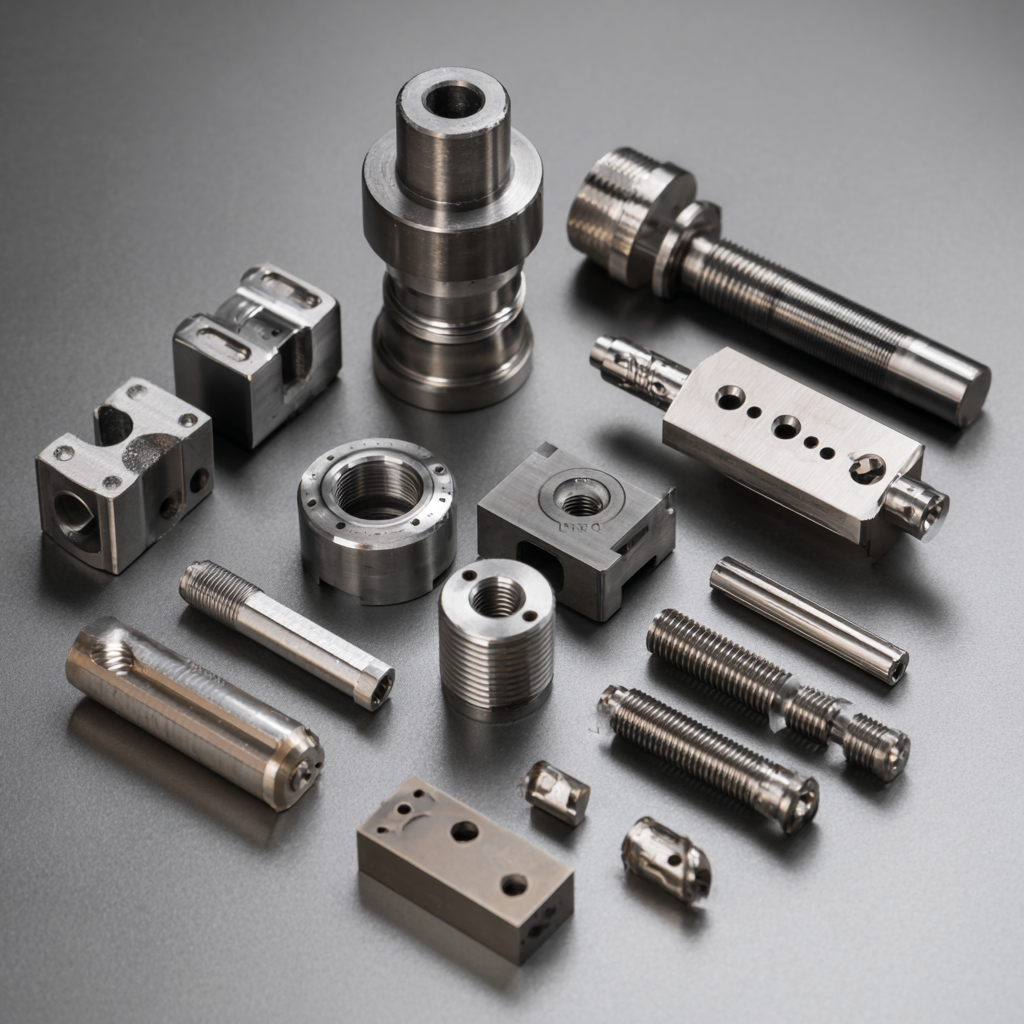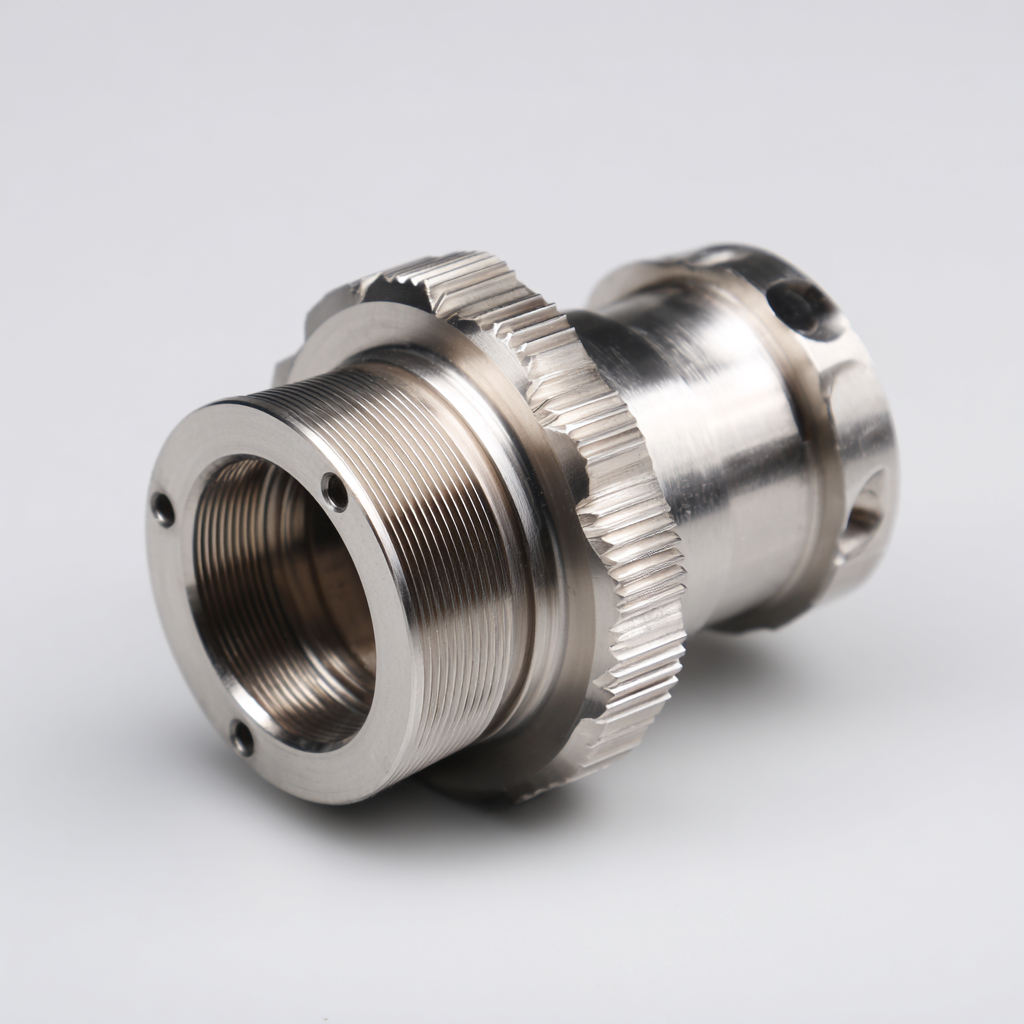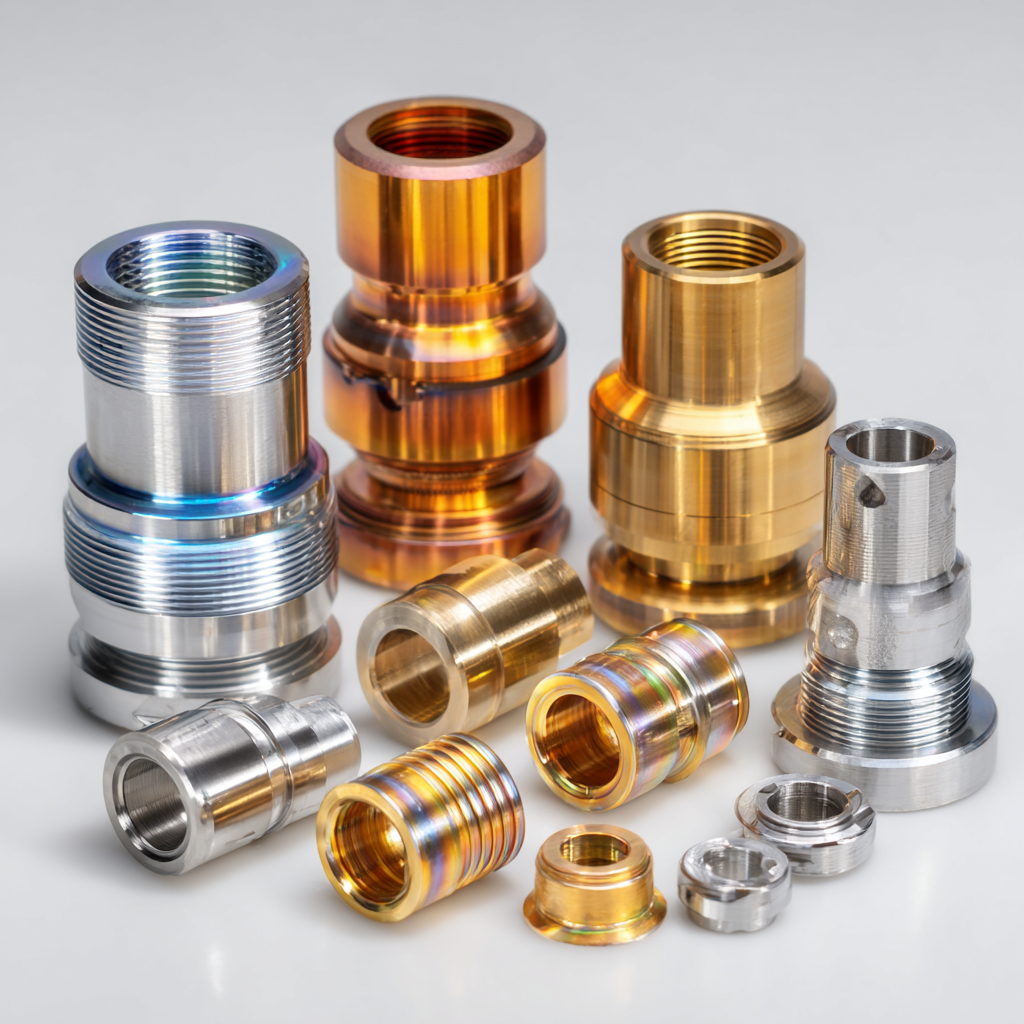


CNC Machining Parts have revolutionized the manufacturing industry, providing precision, efficiency, and versatility that traditional methods often struggle to match. According to a market report by MarketsandMarkets, the CNC machining market is projected to reach USD 100.4 billion by 2026, growing at a CAGR of 6.6%. This growth is largely driven by the increasing demand for customized components across various sectors, including aerospace, automotive, and electronics. The ability to produce intricate designs and high-quality parts in a cost-effective manner underscores the importance of CNC machining in contemporary manufacturing processes.

In this blog, we will explore nine amazing CNC Machining Parts that you need to know about, highlighting not only their benefits but also their applications in diverse industries.
The evolution of CNC machining technologies is set to reach new heights by 2025, significantly influenced by advancements in AI and robotics. Industry reports indicate that the global CNC machine market is projected to grow considerably, with an impressive CAGR of 9.9%, reaching over $195 billion by 2032. This rapid expansion reflects a surge in demand for high-precision and multi-axis machining centers, which are being driven by the need for increased efficiency and precision in manufacturing processes.
Events like the TIMTOS 2025 are pivotal as they showcase the latest innovations and smart manufacturing trends, forming crucial collaborations between nations like India and Taiwan. Meanwhile, the upcoming launch of next-generation multitasking machines highlights the continuous quest for optimization in machining operations. As manufacturers embrace these cutting-edge technologies, the landscape of CNC machining is evolving, promising a future where AI-driven solutions redefine production capabilities and enhance operational efficiencies across the industry.

CNC machining has transformed industries by providing precision, efficiency, and versatility in manufacturing. One of the standout components that have revolutionized production is the custom gears. These machined parts enable seamless transmission of power and torque in various applications, from automotive to aerospace. Their accuracy ensures that machines operate smoothly, improving overall performance and reducing wear and tear.
Another significant CNC machined component is the intricate brackets. These parts play a crucial role in structural support and assembly in various fields, including construction and robotics. The ability to create complex shapes without sacrificing strength has made CNC machined brackets indispensable. Furthermore, custom heat sinks are becoming increasingly important in electronics, where effective thermal management is critical for device longevity and performance. By providing tailored solutions for heat dissipation, CNC machining enhances electronic reliability while maintaining compact designs. The evolution of these components exemplifies how CNC technology continues to push the boundaries of what's possible in manufacturing across numerous sectors.
As we look towards 2025, the landscape of CNC machining is set to be transformed by innovative materials that promise to enhance performance and versatility. One of the most exciting developments is the growing use of composite materials, which combine polymers with various fibers to create parts that are both lightweight and robust. These composites are not only ideal for reducing the weight of components in industries such as aerospace and automotive, but they also offer improved durability and resistance to environmental factors, setting a new standard for quality.
Another key trend is the integration of smart materials within CNC machining processes. These materials, which can change properties in response to external stimuli like temperature or pressure, open up new possibilities for dynamic and adaptive components. This innovation will allow manufacturers to create parts that not only respond to their operating environment but also self-heal or adjust their performance over time. As these materials become more prevalent, the potential for creating highly specialized parts tailored to specific needs will grow, reflecting a more personalized approach to manufacturing.
| Part Name | Material | Applications | Expected Innovations by 2025 | Sustainability Features |
|---|---|---|---|---|
| Gear Component | Aluminum Alloy | Automotive Transmissions | Enhanced Durability | Recyclable Material |
| Heat Sink | Copper | Electronics Cooling | Advanced Thermal Conductivity | Low Energy Production |
| Housing Enclosure | Polycarbonate | Medical Devices | Aesthetic Design Improvements | Biodegradable Options |
| Custom Bracket | Stainless Steel | Industrial Machinery | Enhanced Load Capacity | Corrosion Resistant |
| Valve Body | Titanium | Oil & Gas | Weight Reduction Technologies | Eco-friendly Sourcing |
| Control Panel | Carbon Fiber | Aerospace | Smart Integrations | Lightweight & Recyclable |
| Working Tool | High-Speed Steel | Machining Processes | Longer Tool Life | Reduced Waste Production |
| Connector | Nylon | Electrical Applications | Increased Reliability | Non-toxic Materials |
| Structural Beam | Alloy Steel | Construction Industry | Hybrid Technologies | Sustainable Sourcing |
Sustainable practices in CNC machining are an essential focus for the manufacturing industry as it shifts towards greener solutions. The adoption of eco-friendly materials and cutting processes not only reduces environmental impact but also enhances efficiency. According to a report by the Association for Manufacturing Technology, implementing sustainable practices can lead to a 20-30% reduction in energy consumption for machining operations. This significant reduction highlights the industry's potential to lower its carbon footprint while maintaining productivity.

Moreover, advancements in CNC technology, such as the incorporation of advanced tooling and recyclable materials, further underscore this commitment to sustainability. A study published by SME (Society of Manufacturing Engineers) showed that 48% of manufacturers are actively seeking ways to integrate sustainable components into their processes. By utilizing biodegradable materials and optimizing machining settings for energy conservation, companies are not only meeting regulatory standards but also addressing the growing consumer demand for environmentally responsible products. This shift not only benefits the planet but also positions manufacturers competitively in a market increasingly driven by sustainability.
In recent years, the landscape of CNC machining has been significantly transformed by the integration of automation and artificial intelligence (AI). According to a report from MarketsandMarkets, the CNC machining market is expected to grow from $76.9 billion in 2021 to $94.6 billion by 2026, with a substantial portion of this growth attributed to advancements in automation and AI technologies. These innovations enhance production efficiency, reduce human error, and enable real-time monitoring of machining processes, leading to improved product quality.
As manufacturers adopt smart CNC systems equipped with AI capabilities, they can optimize machining parameters on-the-fly, resulting in minimized waste and enhanced tool longevity. For instance, predictive maintenance powered by AI algorithms allows companies to foresee mechanical failures before they occur, reducing downtime by up to 30% according to a study by McKinsey.
**Tip**: When selecting CNC machines, consider those with integrated AI monitoring features, as these can significantly reduce operational costs and increase overall productivity. Additionally, training staff to understand and leverage these technologies can further amplify their potential benefits in your manufacturing process. By staying abreast of technological advancements, businesses can maintain a competitive edge in a rapidly evolving market.
This bar chart illustrates the production volume of nine amazing CNC machining parts, highlighting the significance of automation and AI advancements in manufacturing. The data reflects the number of units produced for each type of component.